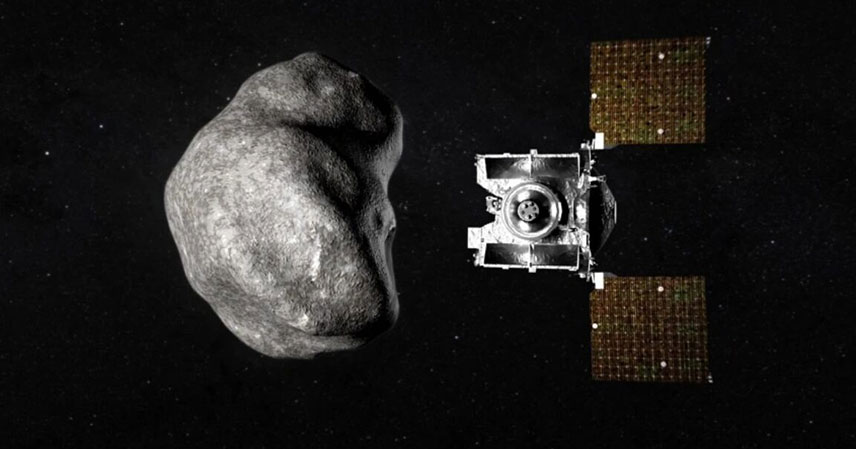In a significant turn of events, NASA has reversed a previous decision to cancel the OSIRIS-APEX mission. This move provides a crucial lifeline to scientists. The mission aims to study an asteroid making an unusually close flyby of Earth in 2029. This reinstatement overturns a plan from the Trump administration. The initial proposal sought to shut down the vital mission.
The OSIRIS-APEX mission was among 19 operating NASA science endeavors. These were slated for cancellation in a budget blueprint. This blueprint was released earlier this year. The scientific community faced uncertainty. Now, the path forward seems clear. This decision highlights the dynamic nature of scientific funding and priorities.
The OSIRIS-APEX Mission: A Second Chance for Exploration 🚀
OSIRIS-APEX is an extended mission of OSIRIS-REx. OSIRIS-REx successfully collected samples from asteroid Bennu. It is currently returning to Earth. The “APEX” stands for Apophis Explorer. This new phase will focus on asteroid Apophis. Apophis is renowned for its close approach to Earth.
The asteroid Apophis will pass within 20,000 miles of our planet in 2029. This distance is closer than some geostationary satellites. Such an event offers a rare scientific opportunity. Scientists can study a large asteroid up close. This flyby provides invaluable data. It helps us understand asteroid composition and behavior.
The mission’s primary goals are multifaceted. Scientists will analyze Apophis’s surface changes. They will also study its gravitational effects. Understanding these aspects is crucial. It informs our planetary defense strategies. This research helps us mitigate potential future threats. It also provides insights into the early solar system.
Dani DellaGiustina is the principal investigator for OSIRIS-APEX. She expressed relief and excitement. “We were called for cancellation,” she stated. “We were reinstated and given a plan to move ahead.” The mission is now set for Fiscal Year 2026. The spacecraft remains in excellent condition. Its health is critical for future operations.
Navigating the Budgetary Cosmos: A Political Reversal 💰
The initial proposal to cancel OSIRIS-APEX sparked concern. It was part of a broader budgetary request. This request sought to defund several NASA science missions. Such decisions often reflect shifting political priorities. They can also be driven by fiscal constraints. However, the scientific value of these missions is immense.
Budgetary battles are common in scientific research. Funding for space exploration is often a subject of debate. The process involves proposals from the White House. It also requires approval from Congress. This reinstatement shows strong advocacy. It highlights the importance of sustained scientific investment. It ensures continuity in long-term projects.
Canceling active missions carries significant consequences. It can lead to loss of scientific momentum. It also risks losing highly skilled personnel. Such disruptions can set back years of research. The reversal for OSIRIS-APEX is a positive sign. It indicates a recognition of the mission’s unique scientific merit. It underscores commitment to space science.
This decision reaffirms NASA’s dedication to its long-term goals. It emphasizes the importance of asteroid research. The agency continues to balance its ambitious portfolio. It must manage various scientific endeavors. This includes Earth observation, planetary science, and astrophysics. The OSIRIS-APEX mission now has a clear path forward.
The Broader Impact of Asteroid Research on Earth and Beyond 🌍
Asteroid research holds profound implications for humanity. It directly contributes to planetary defense. By studying Apophis, we learn more about asteroid dynamics. This knowledge is vital for tracking potential impactors. It helps develop deflection technologies. Protecting Earth from cosmic threats is a top priority.
Beyond defense, asteroids offer clues to our origins. They are remnants from the early solar system. Their composition reveals ancient conditions. Studying them helps us understand planet formation. It also sheds light on the delivery of water and organic materials to Earth. These insights are fundamental to astrophysics.
Future space exploration may also involve asteroid resources. These celestial bodies contain valuable minerals. They could provide fuel and materials for deep-space missions. Understanding their properties is a first step. The OSIRIS-APEX mission advances this knowledge. It paves the way for future resource utilization.
Space missions inspire millions. They push the boundaries of human ingenuity. The OSIRIS-APEX mission embodies this spirit. Its journey promises exciting discoveries. It will engage the public in scientific exploration. This fosters a deeper appreciation for space and science education.
Key Insights into OSIRIS-APEX’s Revival ✨
- The reinstatement of OSIRIS-APEX underscores the critical importance of asteroid research for planetary defense and scientific understanding.
- This decision highlights the dynamic interplay between scientific advocacy and political budgeting, showcasing the power of sustained scientific argument.
- The mission’s focus on Apophis during its 2029 flyby offers a once-in-a-lifetime opportunity for close-up study of a significant near-Earth asteroid.
- NASA’s commitment ensures the continuity of valuable data collection. This will inform future strategies for understanding and potentially mitigating cosmic threats.
- The “happy and healthy” status of the spacecraft confirms its readiness for the extended mission. This sets the stage for exciting discoveries in the coming years.
The revival of the OSIRIS-APEX mission is a triumph for science. It secures a vital mission for asteroid exploration. The scientific community looks forward to 2029. That year, Apophis will make its close approach. This mission promises to deliver unprecedented data. It will deepen our understanding of the universe. It also reinforces our commitment to safeguarding Earth.
Source: One NASA science mission saved from Trump’s cuts, but others still in limbo



